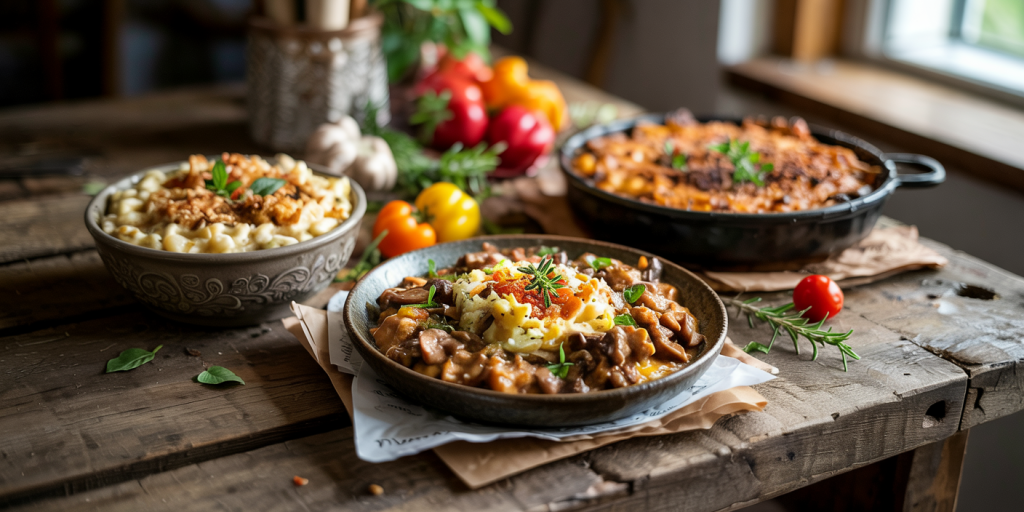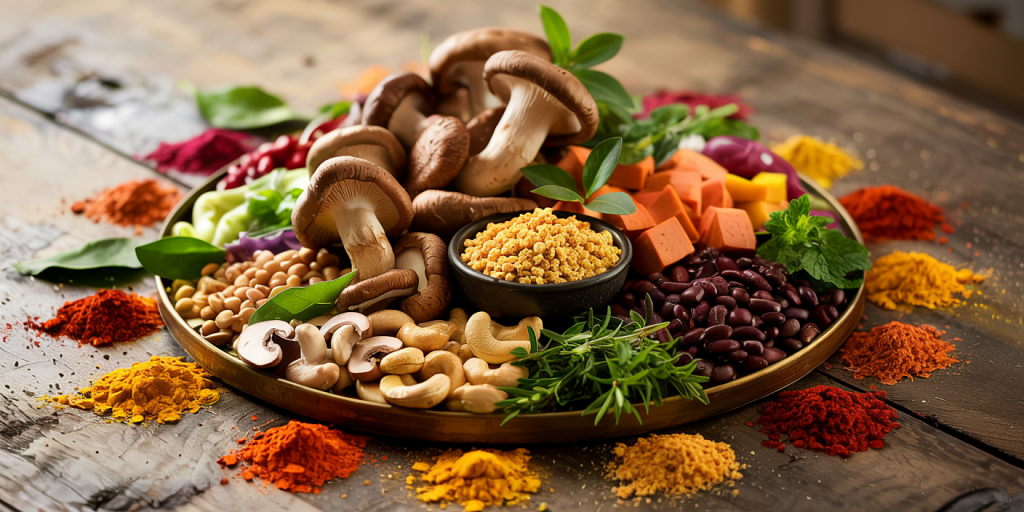In recent years, veganism has evolved from a niche dietary choice to a mainstream lifestyle embraced by millions worldwide. The surge of interest is fueled by growing awareness about health benefits, environmental sustainability, and ethical considerations. Yet, one challenge that often arises is the misconception that vegan cuisine lacks the warmth and indulgence of traditional comfort foods. This article explores the richness of vegan comfort food recipes, demonstrating how plant-based dishes can deliver the same homely satisfaction without compromising nutrition or flavor.
Comfort food has traditionally been synonymous with dishes that evoke nostalgia, warmth, and coziness. These meals are often rich, hearty, and satisfying—attributes many assume depend on animal products like cheese, butter, or meat. However, with ingenuity in culinary techniques and diversified plant-based ingredients, vegan comfort foods are not merely substitutes, but genuine culinary experiences that can stand alone in their right. Delving into practical recipes and cooking tips, this guide aims to inspire both novices and seasoned cooks to embrace vibrant vegan indulgences.

The Essence of Vegan Comfort Food: Flavor, Texture, and Nourishment
At the core of any comfort food lies a balance of flavor, texture, and emotional resonance. Vegan comfort food succeeds by leveraging the immense variety of vegetables, legumes, nuts, grains, and plant-based dairy alternatives to recreate or reinvent traditional favorites.
For instance, consider the classic mac and cheese—long a symbol of indulgence and nostalgia. Vegan versions typically use blended cashews, nutritional yeast, and turmeric to mimic the creamy, cheesy texture and flavor without dairy. Similarly, hearty stews, once reliant on rich meat broths, now utilize umami-rich mushrooms, miso paste, or smoked paprika to provide depth.

According to a 2023 survey by the Plant-Based Foods Association, 46% of respondents stated that taste and texture were the primary factors influencing their choice to adopt or try plant-based meals. This highlights the critical role of sensory satisfaction in vegan comfort food. Recipes that emphasize crisp roasting, caramelization, and seasoning can elevate simple ingredients like cauliflower or sweet potatoes into satisfying dishes.
Moreover, plant-based comfort foods often offer additional nutrients and fiber, contributing to better overall health. For example, lentil shepherd’s pie not only soothes with its creamy mashed top and savory filling but also provides a source of protein, iron, and complex carbohydrates—nutrients sometimes lacking in traditional comfort dishes.
Five Essential Vegan Comfort Food Recipes to Try Today
Exploring vegan comfort food is most easily done through direct cooking experiences. The following five recipes represent a spectrum of flavors, complexity, and ingredients, illustrating the diversity possible with plant-based cooking.
1. Creamy Vegan Mushroom Stroganoff
This recipe replaces traditional beef with a medley of mushrooms, which deliver a meaty texture and umami punch. Cooking onions, garlic, and paprika in a vegan-friendly broth sets the stage for richness. A coconut cream or cashew-based sauce provides lusciousness, while fresh parsley and lemon juice add brightness.
Steps include sautéing mushrooms until golden, simmering the sauce with vegetable broth and plant-based cream, and serving over egg-free noodles or mashed potatoes.
2. Hearty Lentil Shepherd’s Pie
Lentils are an excellent source of protein and fiber, making them a staple in comforting vegan stews. This recipe layers a savory lentil and vegetable filling beneath mashed potatoes made creamy with plant-based milk and olive oil.

The dish is baked until golden on top, providing a satisfying contrast between the crispy crust and tender interior. It’s a perfect winter meal for families seeking nourishment and indulgence.
3. Classic Vegan Mac and Cheese
Using soaked cashews as the creamy base, combined with nutritional yeast (which imparts a cheesy flavor), this recipe replicates the texture and taste of traditional mac and cheese. Turmeric adds color, while garlic powder and mustard powder deepen the flavor profile.
Baked with a crunchy breadcrumb topping made from toasted panko and vegan butter, this dish highlights comfort with a crispy finish.
4. Sweet Potato and Black Bean Chili
Chili is a beloved comfort food for its warmth and heartiness. In this vegan version, sweet potatoes provide sweetness and body, balanced by black beans for protein and texture.
Spices like cumin, chili powder, and smoked paprika create complex layers, while diced tomatoes add acidity. Served with vegan sour cream or avocado slices, this chili becomes a filling meal suitable throughout the year.
5. Vegan Chocolate Avocado Mousse
No comfort food list is complete without a dessert. This mousse relies on ripe avocados as a creamy base, blended with cocoa powder and natural sweeteners such as maple syrup or agave.
Rich in healthy fats and antioxidants, this recipe is a guilt-free indulgence that appeals to both vegans and non-vegans alike.
Nutritional Advantages of Vegan Comfort Foods Compared to Traditional Versions
Beyond flavor and satisfaction, vegan comfort foods often deliver superior nutritional profiles. The following table compares key nutrients in traditional vs. vegan versions of three popular comfort foods:
| Dish | Calories (per serving) | Sat. Fat (g) | Fiber (g) | Protein (g) | Cholesterol (mg) |
|---|---|---|---|---|---|
| Mac and Cheese (cheese-based) | 550 | 12 | 2 | 20 | 55 |
| Vegan Mac and Cheese | 480 | 3 | 6 | 18 | 0 |
| Shepherd’s Pie (meat-based) | 610 | 8 | 4 | 32 | 85 |
| Vegan Lentil Shepherd’s Pie | 480 | 2 | 10 | 26 | 0 |
| Chili (beef-based) | 520 | 10 | 3 | 28 | 70 |
| Vegan Sweet Potato & Black Bean Chili | 410 | 1 | 12 | 22 | 0 |
*Data from USDA Food Database and analyzed by NutritionData, 2023.*
Lower saturated fat and cholesterol content are consistent across the vegan recipes, contributing to heart health benefits. Additionally, higher fiber content in vegan comfort foods aids digestion and promotes satiety, important factors in weight management and metabolic health.
Practical Tips for Mastering Vegan Comfort Cooking
Transitioning to vegan comfort food can be daunting without guidance, but adopting a few strategic habits can ease the process and improve outcomes.
First, focus on layering flavors. Techniques such as caramelizing onions, toasting spices, and using fermented ingredients (like miso or tamari) enhance depth. This prevents the food from tasting flat or bland, a common issue in early plant-based cooking attempts.
Second, texture variety is key. Combining creamy elements (mashed potatoes, cashew cream) with crunchy toppings (toasted breadcrumbs, roasted nuts) or chewy components (whole grains, legumes) keeps dishes exciting.
Third, don’t shy away from umami-rich ingredients. Mushrooms, nutritional yeast, sun-dried tomatoes, soy sauce, and smoked paprika replicate the savory satisfaction often missing in vegan dishes.
Lastly, meal prep can be a time-saver. Many vegan comfort dishes reheat well, such as soups, stews, and baked casseroles. Cooking in batches allows for effortless lunches or dinners during busy weeks.
Popular Vegan Comfort Food Trends and Their Cultural Roots
Vegan comfort food is not just about creating substitutes; it also explores global cuisines traditionally rich in plant-based options. Dishes from Indian, Middle Eastern, Ethiopian, and East Asian cuisines have long celebrated vegetables, legumes, and spices to create satisfying meals.
For example, Indian dal (lentil stew) offers a protein-rich, warming dish often paired with rice or flatbreads. Its complex seasoning and comforting texture have inspired numerous vegan versions of stews and curries worldwide.
In the U.S., the rise of Southern-inspired vegan dishes like jackfruit “pulled pork” sandwiches reflects cultural adaptation. Jackfruit’s fibrous texture mimics pulled meat, allowing vegans to experience barbecue flavors cultivated over generations.
These trends underline how vegan comfort food is rooted in diverse cooking traditions, making it inviting for various palates while sustaining rich cultural histories.
The Future of Vegan Comfort Food: Innovations and Possibilities
Looking ahead, vegan comfort food is poised to benefit from ongoing advances in culinary innovation, ingredient development, and consumer awareness. As plant-based meat and dairy alternatives become more sophisticated—using technologies like fermentation and cell-culturing—the texture and flavor profiles of vegan comfort dishes will continue to improve.
Research published in the *Journal of Food Science* (2024) predicts a 25% rise in plant-based comfort food product launches globally over the next five years, signaling increasing demand. Furthermore, consumer education through cooking classes, food blogs, and social media recipe sharing is empowering more people to prepare delicious vegan comfort meals at home.
Sustainability concerns are likely to influence ingredient sourcing, with a focus on regenerative farming practices and reducing food waste. Such ethical and environmental factors will drive the acceptance of vegan comfort food beyond health or dietary preference motivations.
In sum, vegan comfort food is evolving as a culinary genre that not only satisfies hunger and emotional cravings but also aligns with values of health, compassion, and sustainability. With growing variety and accessibility, it has the potential to become a staple for a wide audience, redefining comfort for the 21st century.
—
This comprehensive exploration of vegan comfort food recipes showcases the richness and adaptability of plant-based cuisine. By embracing creativity and leveraging nutrient-dense ingredients, it is possible to enjoy meals that are at once indulgent and nourishing—demonstrating that comfort and health can harmoniously coexist on the vegan plate.

Deixe um comentário